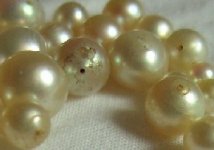J
ojoba oil and its Many Benefits Guest Author - Carolyn Schweitzer
Women have been using Jojoba oil as a beauty treatment for decades, if not centuries. Native Americans used to extract the oil from jojoba beans as a treatment for cuts, sores and bruises, as well as sunburn. It has been applied to both face and scalp to help prevent evaporation and provide lubrication for dry, flaky skin. It absorbs easily, is non-greasy, and is very pleasant and soothing no matter what your skin type. Many women claim that jojoba oil also has a minimizing effect on pores!
Jojoba oil, like other natural oils, is considered a "natural moisturizing factor". Just like the lipids that are naturally found in your skin, it helps fight surface roughness, flaking, and fine lines. But it isn't reserved just for those who have dry skin. People with acne-prone skin, who suffer more than others from clogged pores and blackhead formation, tend to avoid oil-based products like the plague. They assume that all oil-based products will make their acne worse.
Not so! Due to the unique molecular structure of jojoba oil, not only will it mix readily with the skin's natural oils, but studies have shown that it can even inhibit the growth of certain types of bacteria associated with acne.
Jojoba oil is also soothing for skin conditions like rosacea and sebborheic dermatitis, and will not cause flare-ups. By helping to reinforce the structure of the skin's outer layer (the epidermis), jojoba oil -along with the natural oils produced by the skin- is extremely helpful in the healing process. Natural oils help prevent individual cells from losing moisture, and aid in keeping the skin smooth and supple.
Another oil that benefits the skin and has a low comedogenic (pore-clogging) factor is Almond oil, which also makes for a great massage oil. However, it hasn't been shown to have the antibacterial benefits of Jojoba oil.
You can purchase Jojoba oil in it's pure form as a cold pressed extract. It's a pleasant, odorless oil that resists going rancid, so it's shelf life is excellent. A little dab is all you need, gently massaged into your skin!

